Soldera Wines: Sensational Italian Tuscan With A Hollywood-Worthy Backstory
by Ken Gargett
Brunello di Montalcino is an interesting region. One of the top DOCGs in Tuscany, effectively one of the very best regions, and one of the first four regions to receive that designation, it seems to fall in the popular shadow of Chianti, and in more recent decades, the IGT wines, often called Super Tuscans.
I’m not sure why it has never reached the heights Down Under as it has elsewhere: Brunello di Montalcino receives far more attention in other markets and has proved very popular in the United States.
I was thinking that I had neglected it far too long until I started checking notes and realized how often bottles had popped and how often they had been stellar wines.
The famous estate of Biondi Santi has long been considered one of, if not the, greatest of all Italian vineyards, not just the Brunello region. Its 1955 was listed as one of Wine Spectator’s greatest wines of the twentieth century – joining the 1900 Margaux, 1961 Petrus, 1937 DRC Romanée-Conti, 1941 Inglenook Cabernet, 1945 Mouton Rothschild, 1961 Jaboulet La Chapelle, 1947 Cheval Blanc, 1974 Heitz Martha’s Vineyard Cabernet, 1955 Penfolds Grange (Grange Hermitage in those days), 1921 Yquem, and 1931 Quinta do Noval Nacional Vintage Port. But its wines are rare and expensive.
Other stars have been Brunello from Banfi, Luce, and Livio Sassetti Pertimali, while other producers have spread their wings and made wines from there – Gaja and Antinori notably.
More recently, the region has been very much on my radar for the efforts of two producers: Soldera, as everyone calls it, though it is perhaps more correctly known as (take a deep breath) Azienda Agricola Case Basse di Gianfranco Soldera and Stella di Campalto.
Both enjoy cult status, with the latter largely a new addition to most wine lovers’ bucket lists (and, needless to say, the prices are rising as quickly as the reputation).
I have tasted a number of the Campalto wines and, apart from one or two issues where bottles were horribly tainted by venomous corks, they deserve all the accolades thrown their way.
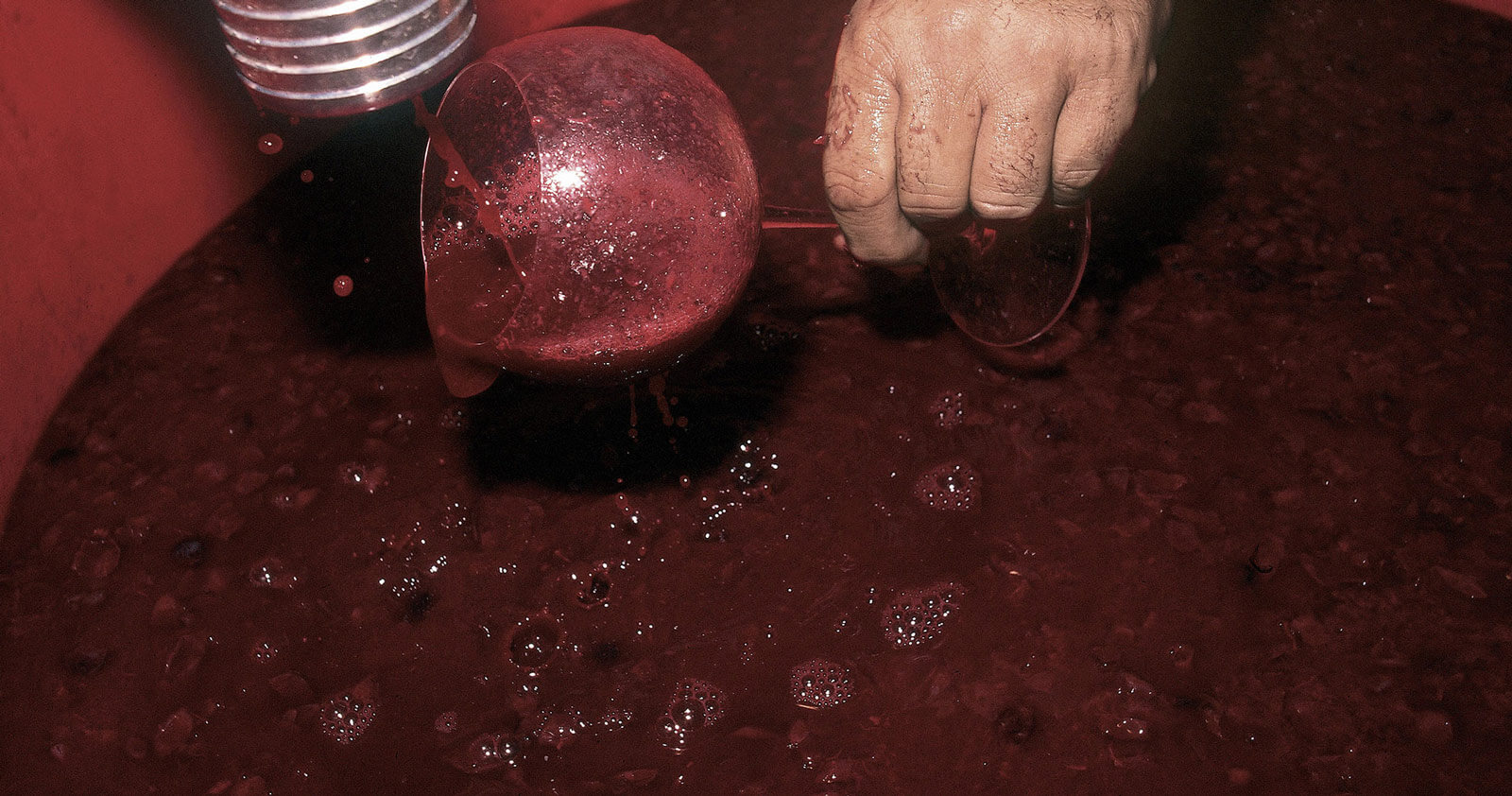
Wine making at Soldera in Tuscany
Soldera is a different kettle of fish entirely. Indeed, its future is far less assured, but its past is a most glorious one. The reason for some concern is that the man many considered the superstar of Brunello, Gianfranco Soldera, passed away on February 16, 2019. He was 82.
It is believed he suffered cardiac arrest while driving. The car ended up in his precious Brunello vineyards, which is perhaps how he might have wished to leave us.
Many will be keeping a close eye on what happens from here. Gianfranco had two children and several grandchildren. Whether one or more has the magic touch remains to be seen.
Brunello di Montalcino, Tuscany
Brunello di Montalcino was effectively “invented” as a region by the Biondi Santi family, who first bottled and named it in 1865, although there are records of red wine made here dating back to the fourteenth century.
They only declared another four vintages until the end of World War II: 1888, 1891, 1925, and 1945. Not surprising that it was both scarce and expensive. American producer Banfi then moved in, looking at Lambrusco. That failed, but vines were grafted to Sangiovese – the grape of Brunello – and so started the rise of the region.
Sangiovese is the only variety permitted in Brunello. Indeed, in the region Sangiovese is actually known as Brunello. As for all grapes, if you want to delve into its history, parentage, characteristics and more, see Wine Grapes by Jancis Robinson, Julia Harding, and Jose Vouillamoz (essential for any serious wine library).
Interestingly, they add a small note saying, “Arguably, the single most convincingly 100% Brunello example is Soldera’s at Case Basse.” Who am I to argue?
The rise of Brunello has been recent. In the 1960s, eleven producers had only 63 hectares. An audit a decade ago showed this had expanded to several hundred producers and several thousand hectares. In 2008, they hit a very large bump in the road with a scandal over illegal blending dubbed Brunellogate, known locally as Brunellopoli.
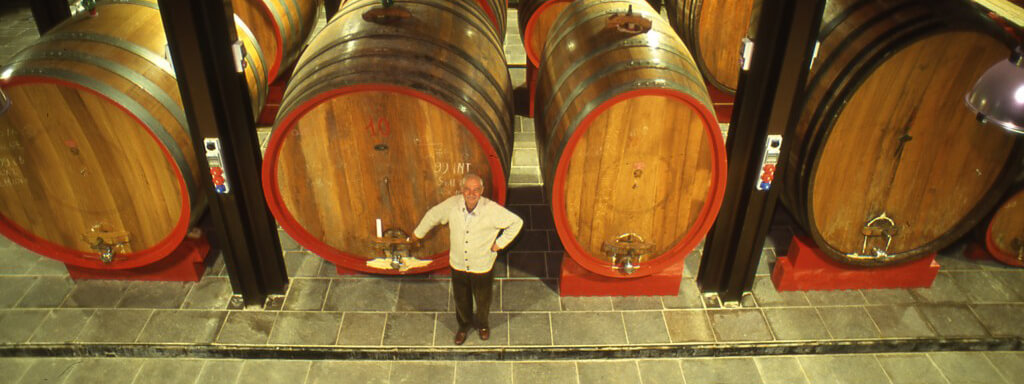
Gianfranco Soldera
Riserva wines from Brunello see five to six years of cask aging. Later regulations saw this reduced to three and then two years, plus four months in the cellar. The oak varies according to the producer – traditionally, it was large, old Slavonian oak casks called botti, although other producers use French oak barrels.
Rosso di Montalcino is a supposedly lesser wine (makers may object to that) that can hit the market after just a year, with six months of that period in oak. Better producers ensure their wines see much more time in oak/cellar.
The region surrounds the medieval town of Montalcino in the province of Siena. There are numerous subzones here contributing to the variety of styles the region offers. Producers, at least many of them, offer both a normale and a Riserva.
Rosso di Montalcino is also important. This DOC was established back in 1984 and has enabled producers to isolate their very best for full aging as Brunello or even Brunello Riserva, while providing them with wine to sell to assist commercially.
It also means that in lesser vintages, a higher percentage, or even all of the grapes, can go to Rosso and therefore not demean the reputation. Rosso is sometimes called “baby Brunello” and it can be great value.
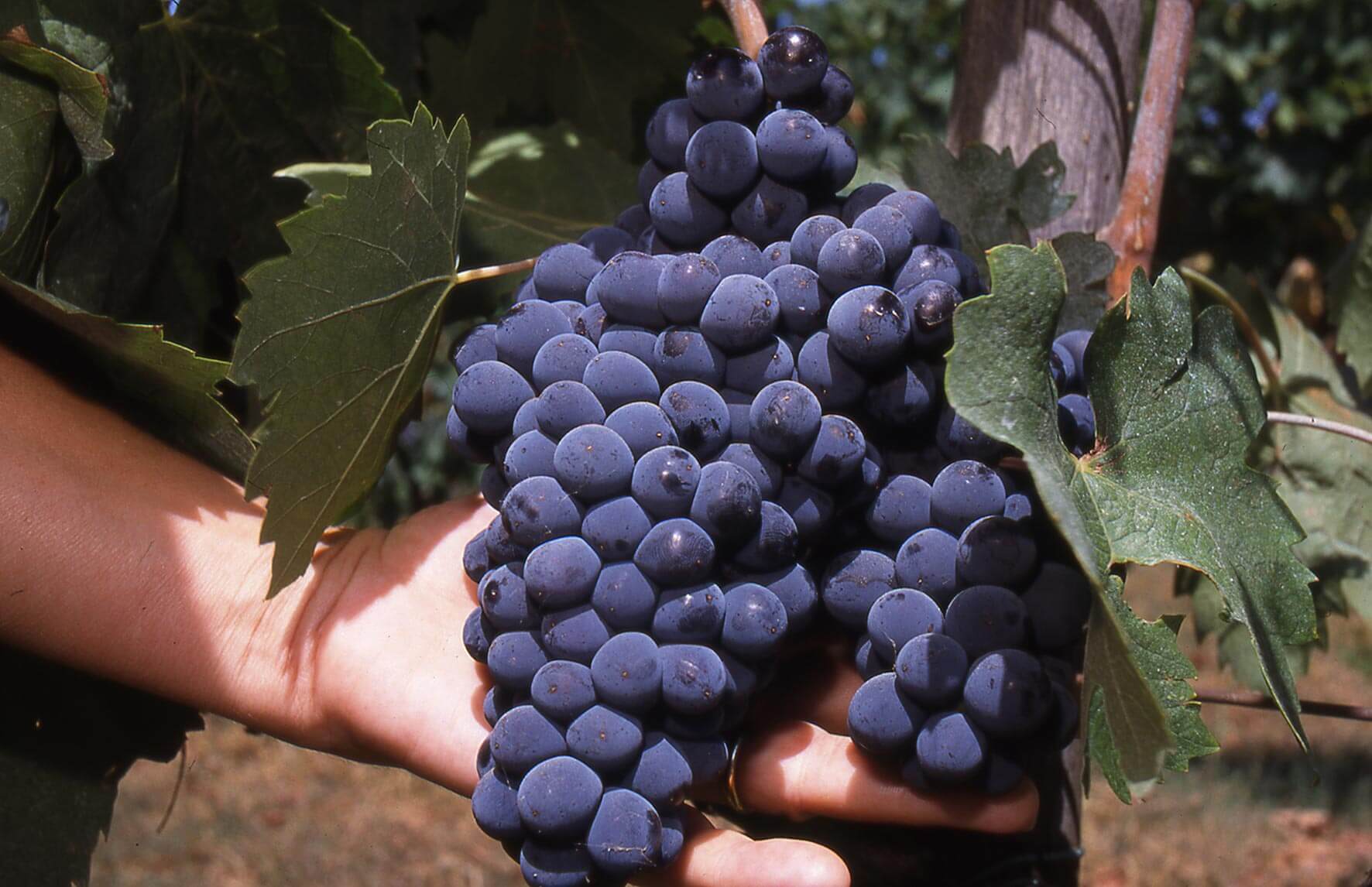
Soldera Sangiovese grapes ready to be transformed into wine
Soldera: a rare winery doing things differently
It would be fair to say that Soldera is one of those rare wineries that not only walks to the beat of a very different drum but succeeds in doing so.
Gianfranco Soldera was an insurance broker working in Milan when he purchased the 23-hectare Case Basse property in 1972. It was a fixer-upper, but Gianfranco was determined to make great Brunello.
He had been keen to purchase land in Piedmont (originally, he looked at his native Verona region) to make Barolo but could not find anything suitable. When he purchased the farm in Brunello, he was insistent that it should not have any vines. It is worth mentioning that reports on such matters do occasionally vary but they are detailed here as accurately as I could ascertain.
He wanted to start from scratch and so the property was planted over 1972 and 1973 – two vineyards: the famous Case Basse and Intistieti.
Gianfranco brought in Giulio Gambelli as an expert consultant in 1976. They worked together until Gambelli passed away in 2012. Case Basse and the neighboring vineyard, Intistieti, total only eight hectares, and yields are deliberately reduced for the sake of quality.
Production is estimated at between 6,000 and 16,000 bottles a year. As well as low yields, severe grape selection restricts quantity. The family takes a non-interventionist approach in the cellar.
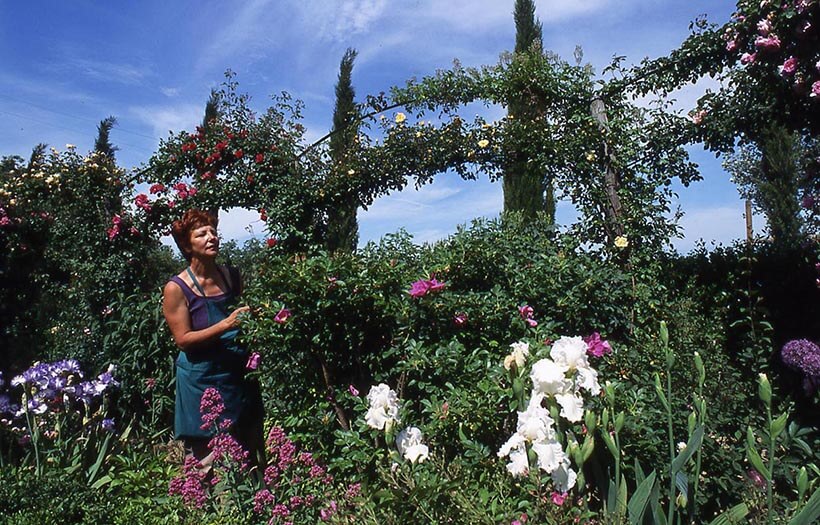
Soldera’s botanical garden
Gianfranco’s wife Graziella is a well-regarded botanist and they created a two-hectare botanical park on the estate with more than 1,500 varieties of roses and much more, including bird nests and beehives, which assist in the fight against parasites, allowing the team to eschew the use of pesticides and chemicals.
Gianfranco used wooden vats for fermentation with indigenous yeasts. The temperature was allowed to do as it wished.
By all reports, Gianfranco was not bereft of stern opinions and happy to share them. “Blunt” seems to be as complimentary as anyone gets when his name is mentioned. He was also not lacking in confidence, once declaring to an interviewer that his was, “one of the only truly great wines in the world.”
Anyone spitting a sample would apparently be immediately thrown off the estate. He was known to be fanatical about the glasses he used. French barriques were looked upon with contempt. He used botti – the large Slavonian oak casks – for up to six years for maturation.
Gianfranco once told a Californian journalist that her state was only good for growing potatoes and that the wines were “poisonous.” Jancis Robinson has said that he once told her that, “The French are very good at selling but they don’t have good soils; they’d be better off growing potatoes.”
How much of this he genuinely believed and how much was showmanship and simply being deliberately provocative, I have no idea. He also told her that he does not allow French producers to visit him or his vineyards, “because for 30 years they’ve produced poison. In the swamps of Bordeaux and Bolgheri, it’s not possible to make great wine.”
Early days saw the wines labeled in accord with local tradition and regulations but more recently Soldera has taken the IGT path. IGT (Indicazione Geografica Tipica) is a category of Italian wine established to deal with the emergence of the Super Tuscan wines.
These were basically wines outside the usual DOC and DOCG classifications and so, technically, the bottom of the ladder. However, many were stellar wines exceeding the supposedly finer examples that fell within those top classifications.
It was making a farce of the system, so the IGT classification was established for them. Gianfranco’s first IGT was his 2006, just named “Soldera” and released in 2013. But we are getting ahead of ourselves.
Gianfranco’s first release was the basic Rosso di Montalcino with the 1975 vintage through to the 1981 as “Rosso dai vigneti di Brunello Soldera” (vino da tavola/table wine) and then from 1982 to 1986 as “Rosso di Montalcino Soldera DOC.”
In 1982, the 1977 “Brunello Soldera,” the first Brunello, was released. This wine was then released each year until the change with the 2006 vintage. Some years saw only a basic Brunello (although basic seems far more demeaning than is intended – the wine was classified DOCG), other years a Riserva, and some both.
Only the Brunello was released in 1977 to 1982 and 1984 to 1988; 1983, 1993, 1994, 1998, and 1999 saw both Brunello and a Riserva released; 1990 (considered by some as his greatest wine), 1991, 1995 to 1997, and 2000 to 2006 saw only the Riserva (2006 was also the first “Soldera”). Neither were released in 1989 and 1992.
Another table wine (vino da tavola) called Soldera Intistieti, was released in 1985, 1987, 1988, 1991, and 1992. It was from estate grapes and made in the usual way, though with a shorter period of aging in barrel. The 1985 vintage also provided an IGT, the Soldera Pegasos, a wine Gianfranco believed had matured sufficiently after just three years.
Gianfranco, not one to play the wallflower, once said that, “27 out of 30 vintages have been excellent: this is a record.” At that stage, he considered the 1979 vintage as the pick.
In the midst of all this, tragedy struck through an act of senseless vandalism. In early December 2012, six vintages of Soldera were largely destroyed: 2007 to 2012. Nothing was stolen but ten botti were emptied: 62,600 liters of the precious wine.
Even back then, the price was at least $300 a bottle, so the financial toll was obvious. That said, as Gianfranco made his original fortune from the insurance industry, one hopes he would have been well covered.
Locals were quick to offer support. Originally, the reports suggested that all wine from these vintages were lost, but not so. There were small quantities from each vintage spared, around one quarter in total.
Theories were rife; criminal organizations were early suspects. Attempted extortion by the local mafia? There was much speculation that it was Gianfranco who had tipped off officials as to the suspected adulteration of some Brunellos back in 2008 (always denied), leading to Brunellogate, and perhaps this was payback.
Gianfranco was also a forceful voice in the fight to keep Rosso 100 percent Sangiovese, while local “modernists” attempted to have international varieties added to the permitted list (Biondi Santi was another estate to strongly oppose this).
There were suggestions of unpaid debts and even insurance fraud. Possibly his outspoken views had finally created a little too much resentment – those few comments he made quoted above would alone have earned him no friends.
Eventually, it emerged that this was nothing but a senseless act of petty revenge by a disgruntled former employee. Allegedly, he was upset that the estate had not provided him with lodging. The act of revenge earned him four years’ incarceration (about ten short of what he deserved, I’d suggest, although I’d love to know what his fellow inmates would make of his crime when told he had four years in jail for “spilling some wine”).
As mentioned, locals offered their support, which was at first appreciated. Even this went downhill, though. Local producers and members of the Consorzio del Vino Brunello di Montalcino kindly offered to donate what they referred to as “wine of solidarity” to the estate to assist with the loss.
Personally, I would have thought that was a generous gesture. Seems Gianfranco – we did mention he had stern opinions – did not see it that way. His response was that the gesture was “inadmissible and offensive, a fraud to the consumers . . . They wanted to give me their wine: I would have had to bottle it as if it were my own, not knowing where it came from.” He then announced that he would be resigning from the Consorzio.
He never had the chance. Understandably miffed at the rebuff, the Consorzio immediately expelled him and also sued for libel, stating that, “We feel deeply offended and damaged by these and other negative statements on the Consorzio and the winemakers made by Mr. Soldera following the event that struck him.” The libel action failed.
No doubt, all this was a prime reason for the move to IGT. If there is any form of silver lining in all this for the estate, it is that this has all combined to push the price to even more stratospheric levels. Of course, consumers would not consider that a silver lining. But lovers of this wine will simply be happy that we are now back to “normal production.”
These days, much of the reputation rests on the handful of wines named Soldera and released since that 2006 hit the shelves (which, of course, is not to in any way diminish the quality of those that came before).
Gianfranco noted that, “the uniqueness of our Sangiovese wine . . . from the typicity of the terroir, grape growing, winemaking, and aging” made this move inevitable. It is worth noting that the 2006 Soldera is the same wine as the 2006 Riserva. Gianfranco put an immediate halt to sales after the vandalism and ensuing dispute and relabeled the rest as “Soldera,” an IGT wine.
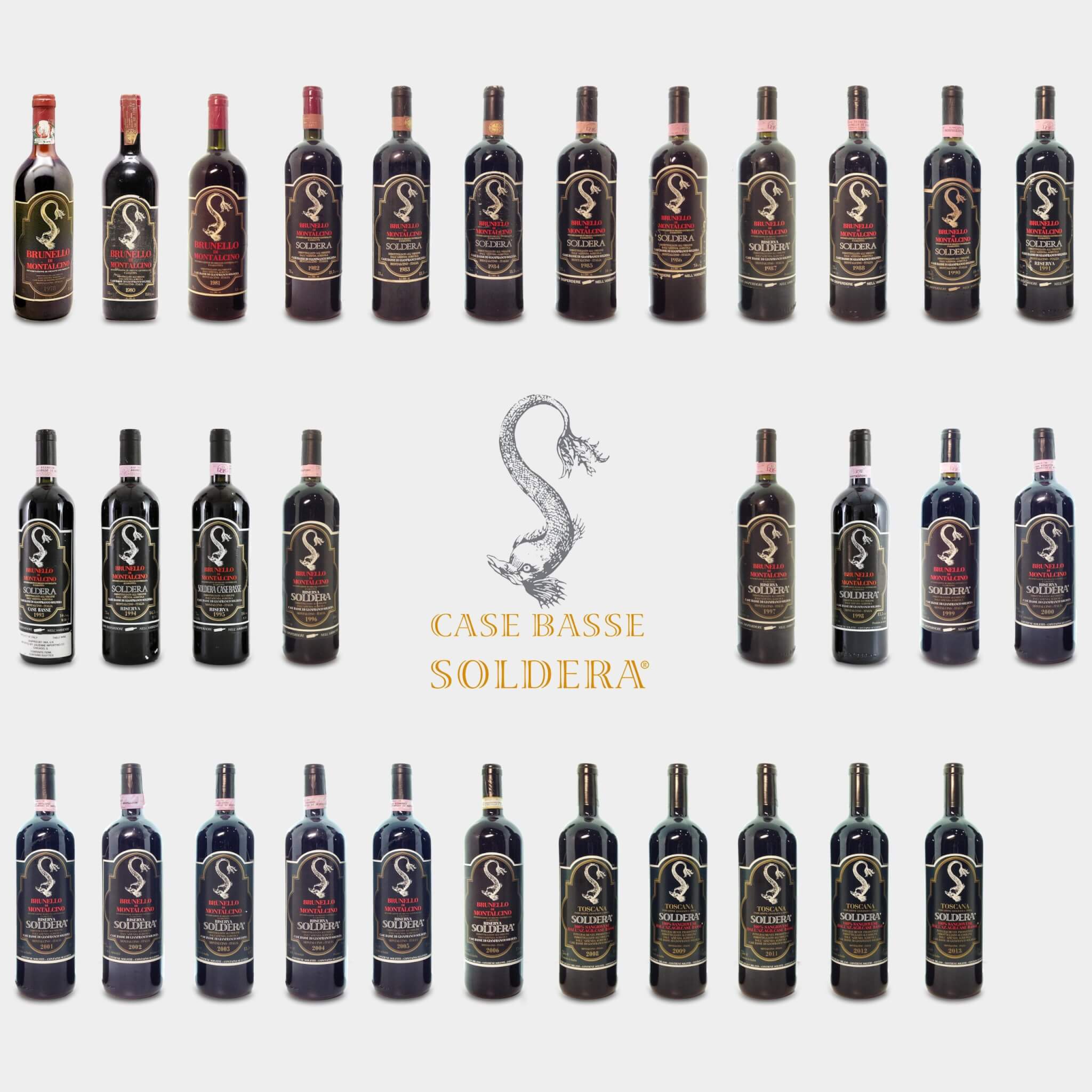
Soldera vintages (photo courtesy www.rotamaguswines.com)
Soldera vintages
The vile vandalism meant that only around 2,000 bottles of 2007 were available, and so both it and the 2008 were released as a pair (the ’08 fared better with around 10,000 bottles spared). The 2009 followed (8,500 bottles), as always “fermented naturally with native yeasts, without pressing or filtration and without additives except for sulphites, and aged in Slavonian oak barrels.”
The 2010 suffered more from the vandalism than any other vintage with only 442 liters surviving. The family decided to bottle what was left for charity auctions for underprivileged children.
Bottling was in larger formats only: 3, 5, 6, 9, 12, and 15 liters. Totaling 50 liters each, four sets, one of each size, were offered for the charities. Each bottle had an original hand-drawn label.

Soldera Case Basse 2013
Again, the tiny quantities of 2011 and 2012 (around 3,500 bottles each) saw them released as a pair. The 2013 was the first vintage to return to full production with 16,414 bottles and 762 magnums. For the first time, “Case Basse” was added to the label.
The most recent vintages are the brilliant 2014 and the 2015. I have not yet tasted the 2015, so can’t comment, but I have enjoyed both ’13 and ’14 several times (I have a good friend who is besotted with the wine and, fortunately, the deep pockets to acquire it – these days expect to pay around $800 a bottle – and like all genuine wine lovers, he is always keen to share his bottles with like-minded friends).
The 2015 is seen as a sensational vintage in Brunello so it does not take much of a leap of faith to assume that this will be a very special wine. It is worth mentioning that there are reports suggesting that Gianfranco had never been so excited about a young vintage as he was about 2017.
Looking back over a range of tasting notes for these wines, it is clear that they are considered wines that will age immaculately for a long period.
Soldera tasting notes
2013 – A fine, promising vintage for Soldera, if not truly stellar for the region, yet as with the 2014, it does seem that Soldera soars above other wines from the region for those vintages. This is an estate that can transcend vintage conditions. For me, wonderfully complex and fragrant with such impressive length. The balance is immaculate. Warm earth, cherries, soft plums, florals, game. The wine exudes elegance. An ethereal style. What is memorable is the length and how the wine maintains its balance and intensity throughout. Velvet-like tannins. A wine of harmony. 97.
2014 – A wine of precision, though from what is considered a lighter vintage. Apparently, it is not uncommon to mistake this wine for a Grand Cru Burgundy, but in a blind lineup, to me, it screamed out exactly what it was. What a glorious wine. A little like a liquid Cherry Ripe. Supple, concentrated, and yet also so delicate, great length to be found here. If I had to use just one word to describe this wine it would be “alive.” Red-fruited with such an entrancing texture and great length, again maintaining the intensity throughout. Silky tannins. A brilliant wine. 98.
For all the controversy, the bluntness, and the problems, one thing is certain: these are wines from the Brunello region of supreme quality. Soldera deservedly takes a seat at the table of the world’s greatest wines.
The Magician of Montalcino will be missed.
For more information, please visit www.soldera.it/en.
*This article was first published on July 14, 2020 at Soldera Wines: Sensational Super Tuscans With A Hollywood-Worthy Backstory
You may also enjoy:
Barale Fratelli Barolo Chinato: Difficult To Find, But Well Worth The Search
Ten Years Of Giuliano Mazzuoli: An Independent Made In Italy
Bartolomeo Ferracina Pen-Watch By Montegrappa: A Pen That Writes Well And Tells The Time Too
Leave a Reply
Want to join the discussion?Feel free to contribute!



Supertuscans are the wines made with different grapes respect of the historic Sangiovese (Chianti, Brunello di Montalcino and Vino Nobile di Montepulciano) that is made with Cabernet, Merlot and Pinot grapes as the wines from the area of Bolgheri – near Leghorn- (Sassicaia, Ornellaia and Solaia)
Hi, Piero. Thanks for that. 100% right of course. I’ll confess I could not find any suggestion that we might have suggested otherwise, but then I saw our headline. I’ll get it fixed.
We have had a thorough look at the original Supertuscan, Sassicaia, elsewhere if you are interested.
https://quillandpad.com/2018/12/25/tenuta-san-guido-sassicaia-2015-rates-97-100-but-how-does-it-compare-with-the-1985-vintage-one-of-the-greatest-wines-of-the-last-century/
best
ken gargett
I live in Tuscany, in Viareggio, near the area of Bolgheri (Sassicaia) and i’m also a sommelier Fisar for passion, so thanks for your reply and the correction
Thanks, Piero. What a wonderful part of the world in which to live. I checked out the Fisar site and signed up for the newsletter. Sass is such a wonderful wine – the 1985, I have been fortunate to see it twice – is one of the greatest wines I have ever encountered. And I am old enough (just) to remember when Masseto was still more than affordable.
Thanks for pointing that out, Piero, the title has been corrected.
Regards, Ian